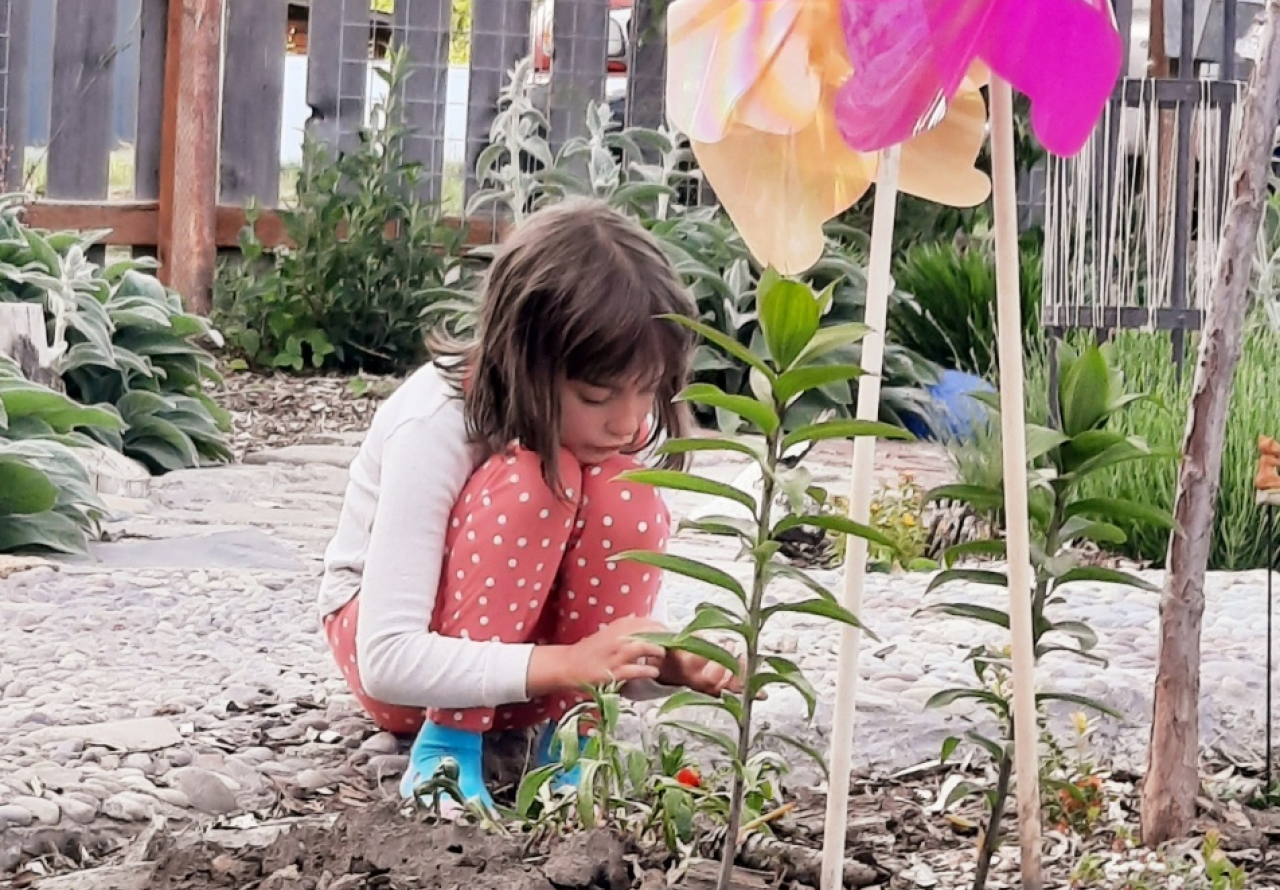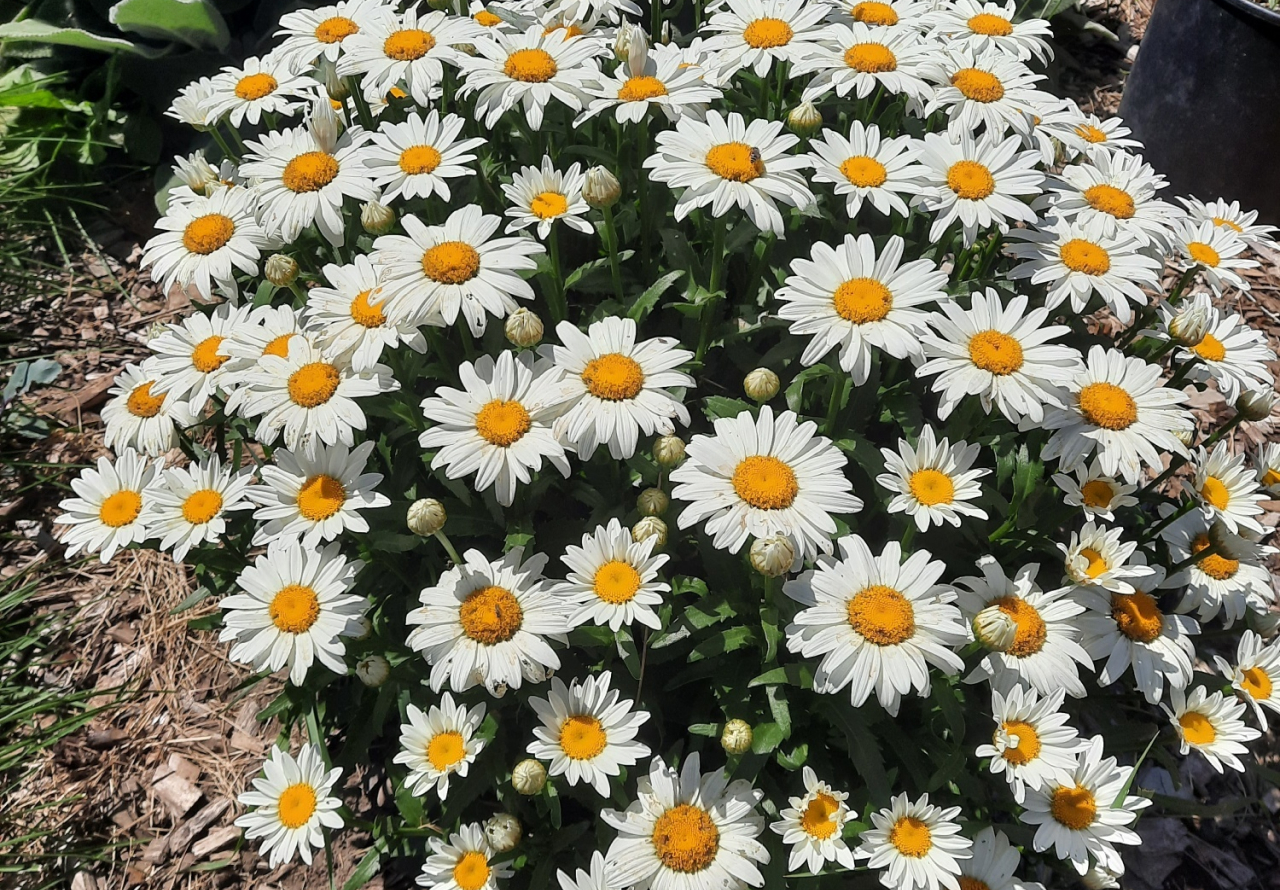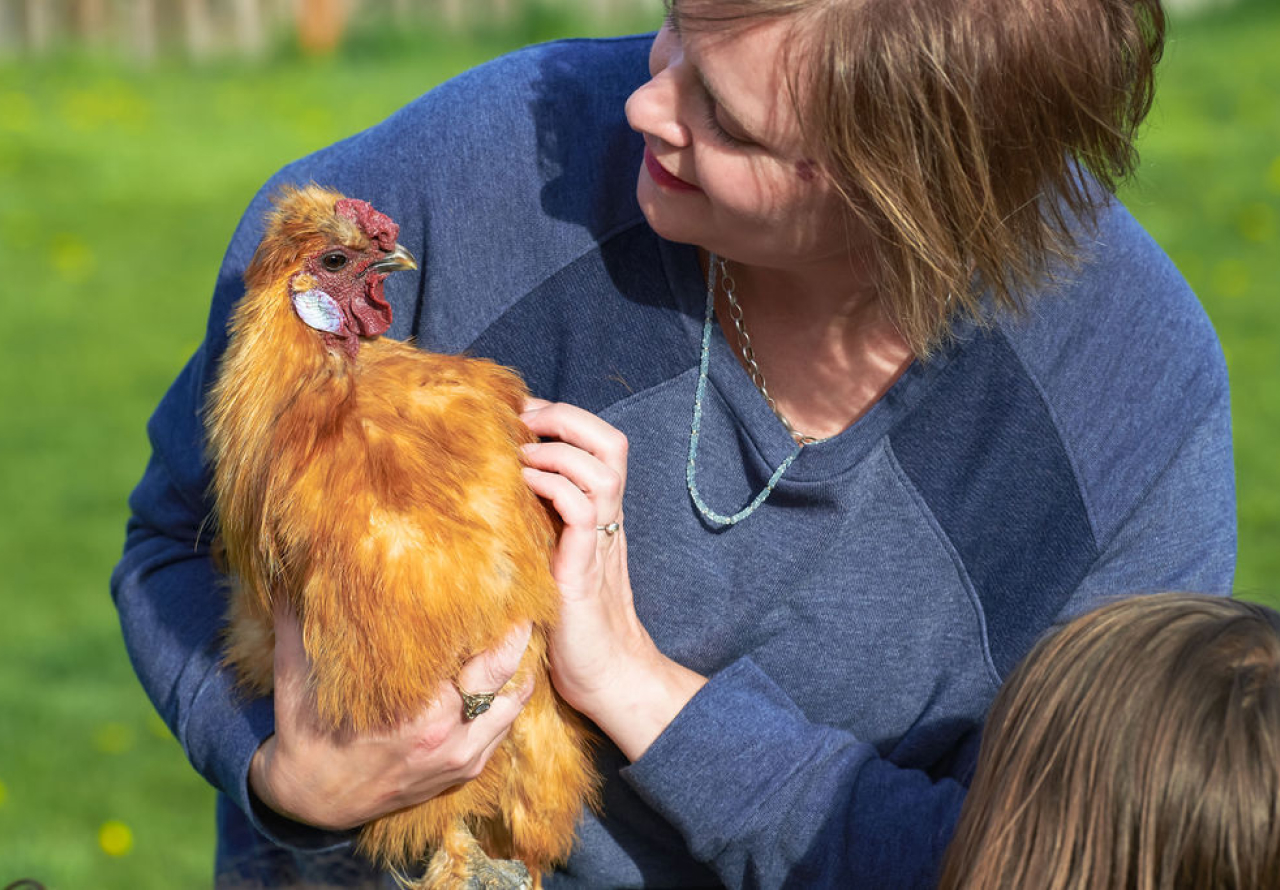Have you listened to Raising Wild Hearts podcast with Ryann Watkin??
It's one of my faves!
Goodpods ranks it "Top 10 Podcast for Homeschooling" and "Top 50 Podcast for Motherhood". Yes, get your hinder over there and check it out! You can start with my episode called "Nature, Sensory Learning, and Child Development".
Ryann and I had a fun, deep, and insightful convo about the critical importance of the child-nature connection, sensory-based nature play, and neurodiversity.
If you listened to just one of my podcasts, I'd say "THIS ONE!" Lots and lots of great nuggets.

I’d like to start this post with a story, one of the most moving stories I’ve heard about how nature can reach a child through their sensory experience, connecting with the deepest part of them. This story is a recap of a conversation I had with a former Director of a small, rural nature center in the Midwest.
The nature center was a frequent destination for elementary school field trips. That day a school bus loaded with 5th graders came to the center for a ½ day visit. Not that long after they arrived, the Director, looking for the teacher, walked through the group of children who were immersed in their natural learning activities with staff. She spotted the teacher standing away from the group, crying.
Immediately she went over and asked the teacher if she was ok and if everything was alright. The teacher responded by saying, “Everything’s amazing.” She went on to tell the Director that she had just been approached by one of her students, a boy with autism. This boy had been nonverbal since birth. Within 20 minutes of being at the nature center, he came to her a said, “This place is SO beautiful and the air smells so GOOD.”
Dang it. I get overcome with emotion every time I think about this story. We don’t fully understand the depth of what nature gives us. We may never truly understand how nature opened a door for this child that allowed him to speak for the first time in his life, a full sentence no less. The words were always there inside him. Nature helped him let it out. More specifically, I’ll wager, his sensory experience of nature helped him let it out.
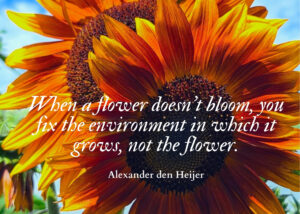
We all perceive the world through our senses. Our sensory system receives information <Whoa, that’s hot. I’m standing too close to the campfire!” Or, “Something smells good…Woo hoo, mom made cinnamon rolls!> Our senses work together seamlessly communicating information to our brain helping us make sense of our world.
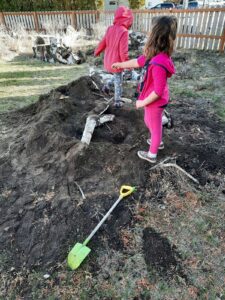
Digging in the dirt is a multi-sensory experience, especially when there's tools, loose parts, and friends involved!
All children need experiential, nature-based sensory play. Our sensory systems (and neurological system and brain...) only develop when they’re stimulated. There’s tons of research to back up what I’m saying here: the more sensory-rich a child’s daily environment, the greater the development of their sensory system, their brain, their motor skill development, their imagination, and other beautiful things.
Most of the magic happens from birth to the age of 10, when a child’s systems are developing, flexible, and trying to soak up all the sensory information they can. Being immersed in a sensory-rich environment is good for all of us. Developmentally, children MUST be immersed in constant, varied sensory experiences so they can develop in the way they were meant to.
And, it’s simple. A sensory-rich environment is a nature-rich environment.
Now, we don’t all experience the world in the same way, therefore we don’t all understand the world in the same way. Children and people with autism experience the world very differently, in large part, because their sensory system processes information very differently. For someone without autism or sensory processing disorder (SPD), toe seams in socks may be unnoticeable. For some with autism or SPD, toe seams may be so irritating that they can’t concentrate on learning. A fire truck siren may hurt our ears temporarily, but for a child with autism or SPD hearing a blaring siren may cause severe physical pain.
Additionally, kids with autism and sensory processing disorder may be hypersensitive or hyposensitive in one or more of their senses. A child who’s hypersensitive is getting too much information from the world around them (system overload). One who’s hyposensitive is not getting enough information (system underwhelm). Either way, this sensory imbalance forces children to seek activities and spaces that help bring them into sensory balance. Often their sensory experiences and sensitivities cause them discomfort, confusion, frustration, and sometimes even pain.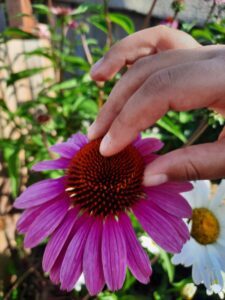
The most important thing I realized, in 20+ years of designing outdoor spaces for children, is that good design for children with autism is good design for ALL children. And, that is the foundation from which I design and advocate.
So, how can we create nature play spaces at home that stimulate children's sensory systems, and by extension, their bodies, brains, imaginations, hearts, and spirits?
There are 7 sensory systems that gather information
We all know the 5 senses: touch, sight, taste, small, and sound.
But, there are 2 sensory systems that are underrepresented, yet critical to understanding child development and growth: the vestibular system and the proprioceptive system, or proprioception.
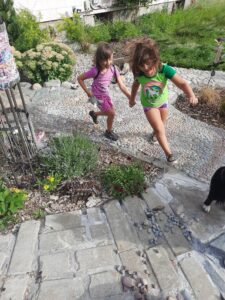
Running and walking are vestibular activities.
The vestibular system is located in our inner ear. If you’ve ever experienced vertigo, that’s your vestibular system gone haywire. This system responds to the position of the head in relation to gravity and accelerated or decelerated movement <Am I upside down? Am I right side up? Am I sideways?> Swinging and spinning are vestibular activities.
Proprioception is the sense of your own body in space, without the use of other senses such as sight or touch. <I can walk past this table without bumping into it.> It’s also knowing where your limbs are relative to each other. <Can you close your eyes and touch your nose?> It’s how your body communicates with your joints, tendons, and muscles. <My brain knows how much force my hand and fingers need in order to pick up a paper cup full of water without splooshing it all over the place.> Issues in proprioception revolve around motor coordination, body awareness, and balance.
Once you start looking at play and learning activities from the perspective of sensory experiences, you'll gain a whole new appreciation for simple activities like playing in the sand, exploring the local creek, and walking barefoot in the grass.
Check out my other posts that go in-depth on each sensory system, and which nature play features and activities are the best for each one.
Check out my eBook, Nature Play for the 7 Senses: A Parent’s Guide for Natural PLay & Learning Spaces for ALL Children
Thanks so much for being here with me! Whether you’re new to the nature play scene or a seasoned expert, I’m certain you’re going to find here a fresh perspective and heart-felt information on this very important thing we call nature play.
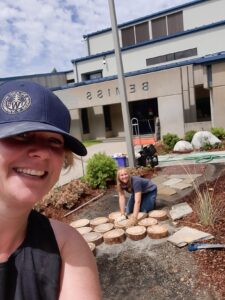
Leading a sensory path installation with some amazing school volunteers!
Let me introduce myself, I’m Jena. I’m a landscape architect with 20+ years’ experience designing nature-based play, learning, and therapeutic landscapes for kiddos of all abilities and diversities.
Now, I teach parents, educators, therapeutic professionals, and others how to create sensory-rich play spaces at home or wherever their kids are. I do this because I believe the power should also be in your hands to create loving, engaging, natural play/learning/therapeutic spaces where your kids will blossom.
My approach to my work centers on creating environments that engage children’s 7 sensory systems: sight, touch, taste, smell, sound, vestibular, and proprioception.
Why is this important, you ask? It is not just important, I say, but essential. I’m going to share the 3 biggest reasons why I have an unshakeable belief in the value of sensory-rich nature play:
Essential reason #1...
Our children are as beautiful and diverse in their being, individuality, learning, cognition, and physicality, as the flowers in a well-tended garden. And, that’s how it should be.
When we garden, we recognize that each individual plant has its own set of care needs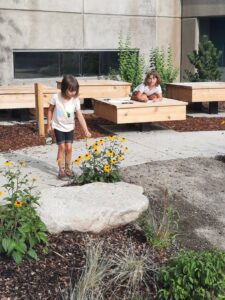 and conditions in which it thrives. It’s the same with our children. Each child has his or her own set of care needs and conditions so they may grow into the fullest, happiest, most centered versions of themselves possible.
and conditions in which it thrives. It’s the same with our children. Each child has his or her own set of care needs and conditions so they may grow into the fullest, happiest, most centered versions of themselves possible.
A child develops, learns, plays, and thrives when their sensory systems are given rich, diverse, high-quality sensory information.
The goal of a sensory-rich nature play area is to provide a diverse range and depth of sensory experiences where a child can seek out the type and intensity of sensory input that feels best to them at the time. The ability for kids to choose their experiences is ESSENTIAL, as I said before, because what one child needs to thrive can be very different from another’s (and that’s perfect).
These spaces are inclusive by providing equitable play and learning experiences. For example, there’s more than one way to learn one’s alphabet: pencil and paper, drawing with a stick or their finger in the sand, creating letters out of bits of natural materials…and it’s not always done sitting down. Kids, if they’re inspired, can move their bodies, lay on their bellies, or whatever position feels best for them. Sayonara, tiny uncomfortable school chair.
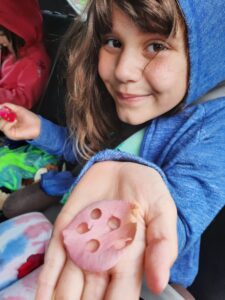
With diversity of natural features and activities, all kids will find valuable experiences for their bodies, minds, and spirits.
Nature play areas are also inclusive because nature doesn’t judge. Nature will meet any child right where they are physically, cognitively, emotionally, and socially. Nature is the most loving, supportive, and sometimes challenging (in a good way) companion for kids of all abilities and diversities.
Essential reason #2 is...
The healing benefits of nature has been well-researched over decades. I’m glad for the scientific ‘proof’. But, I’ve even more glad that we have the ability to look into our hearts to understand nature’s healing power with even more clarity and truth. For all ages, natural environments boost our happiness and joy, our immune systems, our self-confidence, and so much more. Kids, specifically, benefit from nature’s ability to help them with sensory balance, lessening the symptoms of many conditions like autism, sensory-processing disorders, and ADHD (yes, there are lots of studies on this).
Children’s landscapes, like nature play areas, learning environments, and sensory gardens aren’t just healing for the kids; these spaces are healing for us all. I speak to this on a global stage on a professional level and I also have personal experience.
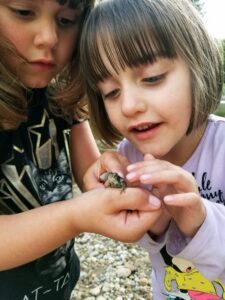
The twinners find a tiny frog at our favorite creek spot.
In 2012 I dealt with cancer and multiple emergency surgeries that almost ended me. It took a long time for my body and mind to come back to some degree of ‘health’. In 2015, I gave birth to an amazing set of twins, whom I love more than life itself. After 2 1/2 years of minimal sleep (I’m talking an average of 3 hours a night) I’m back to being a ragged zombie with no time or energy to attend to my own physical or mental health. What mom can’t relate, right?
In 2018, I decided to build a children’s sensory garden at our home. Over the past few years, the garden has grown and evolved into a magical space that we all enjoy beyond measure. I built it with my own two hands, with much supervision and guidance from my girls. Our garden has, for me, offered daily opportunities for physical healing, mental clarity, emotional support, and a feeling of wholeness and connection.
My point, dear moms and dads, is that if you build a nature play space at home, it will benefit, holistically, the health of your children, you…your entire family.
And, the third essential reason is…
If you ask me, a primary purpose of childhood is discovering all the experiences that bring us joy.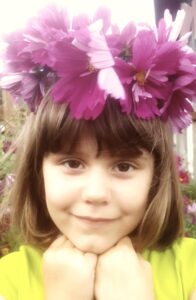
In joy, there’s innocence.
In joy, there’s connection.
In joy, we figure out who we really are.
In joy, we are all in our native state.
Children naturally seek that state of joy in every moment of their waking lives. They embody that innocent, vibrant energy. They relish the feelings of connectedness. They intuitively understand that this state of being is closer to their authentic selves.
We seem to lose this ability as we go into later school years and as we become adults. Then, we spend our adult lives being productive, and efficient, and pushing ourselves harder and harder. I, myself, have always been a hard worker and have spent many years in the mindset that the harder I work, the faster I’ll get to where I want to be. But, in the process, I lost much of the joy in life that makes each day magical. AND, where I wanted to be always seemed to shift around, a constantly moving target. Even now, I look around and see most of my family, friends, and colleagues clinging tight to that same belief. I have to ask, ‘Where is that really getting us?’
I truly believe that children are our teachers, and we can find no better. They remind us what’s really important. They encourage us to break out of our ‘programming’ and look at the world with fresh eyes. They give us permission to do things differently than how everyone else does it. They want us, need us, to unabashedly be our unique selves. That way, they have the freedom to do the same.
Children remind us to find the joy in all the small moments. That’s the only place joy truly exists, and they know it.
Check out my eBook, Nature Play for the 7 Senses: A Parent’s Guide for Natural PLay & Learning Spaces for ALL Children
